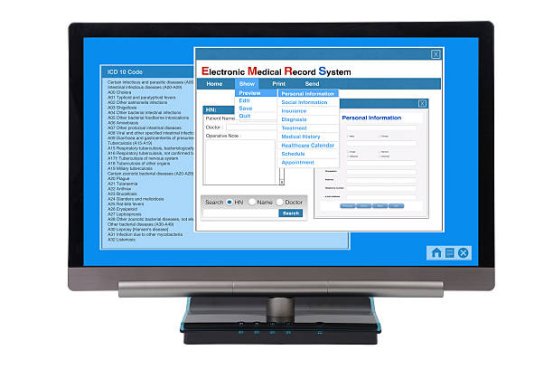Electronic Medical Record (EMR) systems are now widely adopted in U.S. hospitals, fundamentally changing how healthcare providers record, access, and share patient information, and transforming the day-to-day management of clinical workflows.

What Are Electronic Medical Record Systems?
EMRs are digital versions of traditional paper charts that centralize patient medical histories, diagnoses, treatment plans, and test results into a single, organized system. They provide clinicians with rapid access to critical information, enabling informed, timely decision-making. Key functionalities include allergy alerts, medication interaction warnings, and preventive care reminders, all of which play an essential role in patient safety and improved clinical outcomes. Unlike personal health records, which patients manage themselves, EMRs are primarily intended for use by healthcare providers. By comparison, Electronic Health Records (EHRs) support secure data sharing across multiple healthcare institutions, highlighting the importance of interoperability and effective information exchange in today’s medical environment.
Benefits of Electronic Medical Record Systems
EMRs enhance operational efficiency by significantly reducing administrative tasks, allowing clinicians to dedicate more time to direct patient care. Research suggests that EMR implementation can reduce paperwork by up to 50%, streamlining everyday operations and boosting productivity. They also improve the accuracy and completeness of patient data, help minimize errors, and support better health outcomes. Integrated reminders for preventive care encourage patient adherence, while secure communication tools allow seamless collaboration among healthcare providers, ensuring coordinated and comprehensive care delivery.
Challenges of Implementation
Despite their clear advantages, EMR implementation presents certain challenges. Initial investment costs—including software acquisition, hardware setup, and staff training—can be substantial, particularly for smaller or independent healthcare practices. Resistance from personnel accustomed to paper records may temporarily disrupt workflow efficiency. Continuous education, hands-on training, and ongoing support are critical for building staff confidence and competence in using these systems. Data security remains a central concern, requiring EMR systems to incorporate robust cybersecurity protocols and comply with regulations such as HIPAA to protect sensitive patient information from unauthorized access, breaches, or misuse.
The Regulatory Landscape
Legislation such as the HITECH Act has played a pivotal role in promoting EMR adoption by encouraging the meaningful use of health information technology to enhance patient safety and overall care quality. HIPAA establishes rigorous standards for data privacy and security, ensuring ethical handling of patient information and fostering trust between patients and healthcare providers. Compliance with these regulations is essential for successful EMR deployment and long-term utilization.
The Future of EMR Systems
Advancements in technology are continually expanding the capabilities of EMRs. Improved interoperability will enable seamless data exchange across multiple healthcare facilities, enhancing care coordination. Artificial intelligence and machine learning applications will support predictive analytics, early trend detection, and more informed clinical decision-making. Integration with telemedicine platforms is becoming increasingly important, as EMRs must support virtual consultations, remote patient monitoring, and other digital health innovations. Additionally, ongoing developments in patient engagement, personalized treatment plans, and workflow automation will contribute to making EMRs more efficient, comprehensive, and truly patient-centered.
Conclusion
EMR systems are revolutionizing healthcare by optimizing information management, enhancing provider communication, and streamlining clinical workflows. Although challenges such as cost, cybersecurity, and staff adaptation remain, continued technological innovation and clear regulatory guidance are driving EMRs toward more integrated, effective, and patient-focused healthcare delivery.
